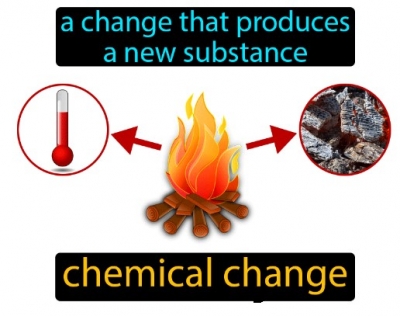
Chemical changes are also known as chemical reactions. The “ingredients” of a reaction are called the reactants, and the end results are called the products. The change from reactants to products is signified by an arrow:
Reactants ? Products
The formation of gas bubbles is often the result of a chemical change (except in the case of boiling, which is a physical change). A chemical change might also result in the formation of a precipitate, such as the appearance of a cloudy material when dissolved substances are mixed.
Rotting, burning, cooking, and rusting are all further types of chemical changes because they produce substances that are entirely new chemical compounds. For example, burned wood becomes ash, carbon dioxide, and water. When exposed to water, iron becomes a mixture of several hydrated iron oxides and hydroxides. Yeast carries out fermentation to produce alcohol from sugar.
An unexpected color change or release of odor also often indicates a chemical change. For example, the color of the element chromium is determined by its oxidation state; a single chromium compound will only change color if it undergoes an oxidation or reduction reaction. The heat from cooking an egg changes the interactions and shapes of the proteins in the egg white, thereby changing its molecular structure and converting the egg white from translucent to opaque.
The best way to be completely certain whether a change is physical or chemical is to perform chemical analyses, such as mass spectroscopy, on the substance to determine its composition before and after a reaction.
Picture Credit : Google




